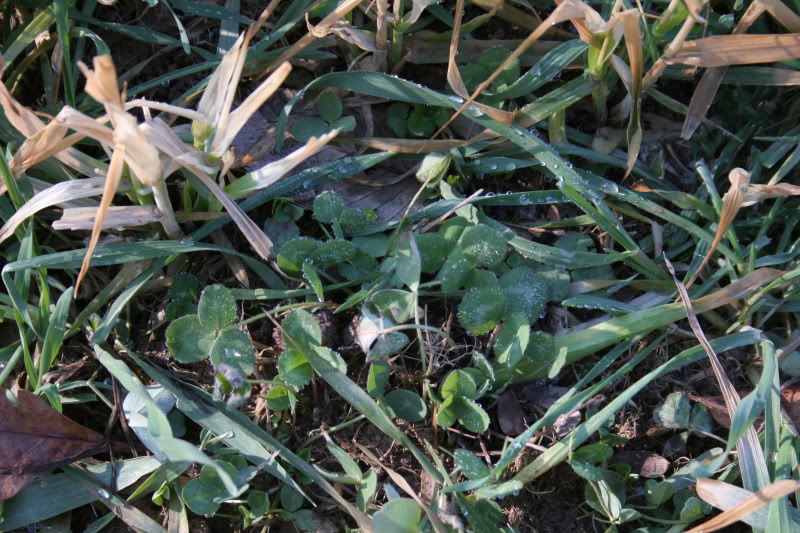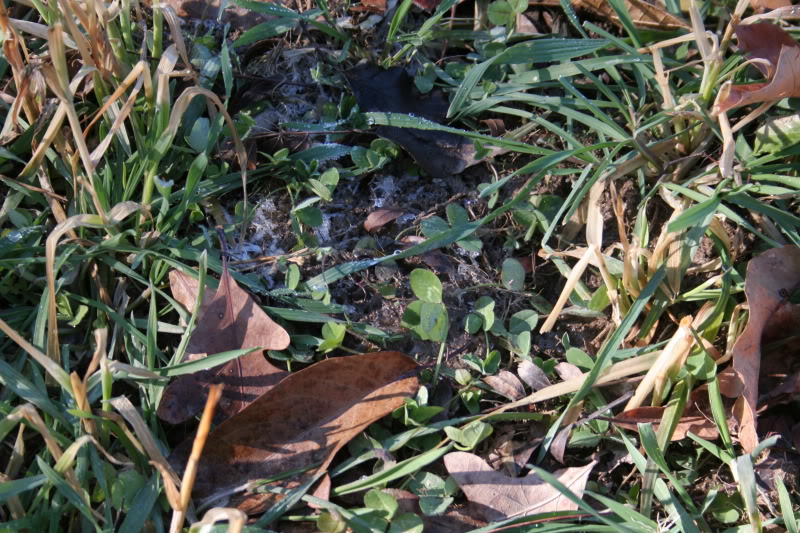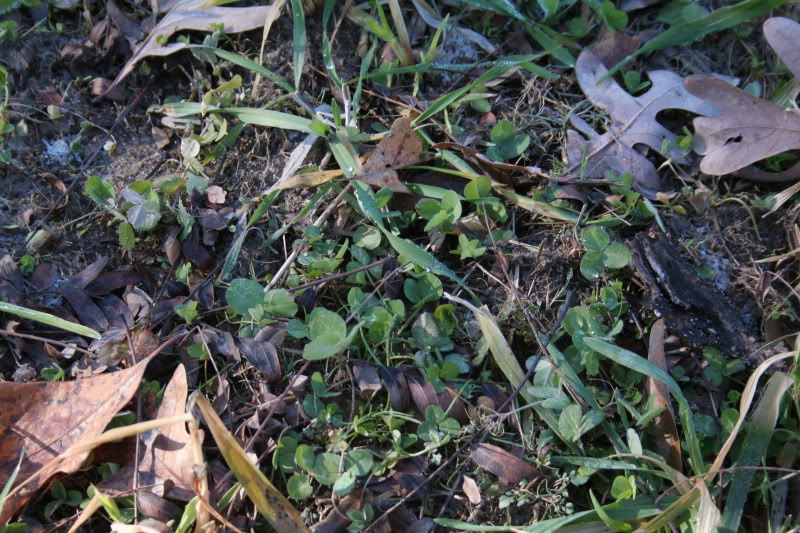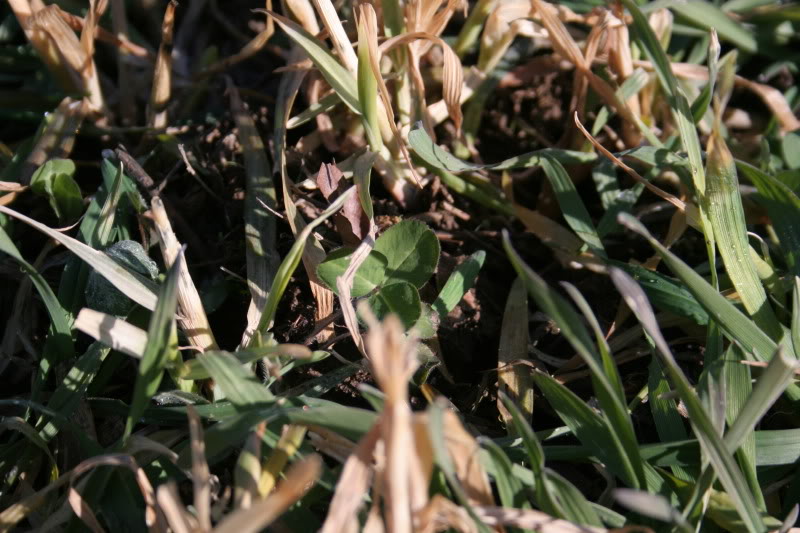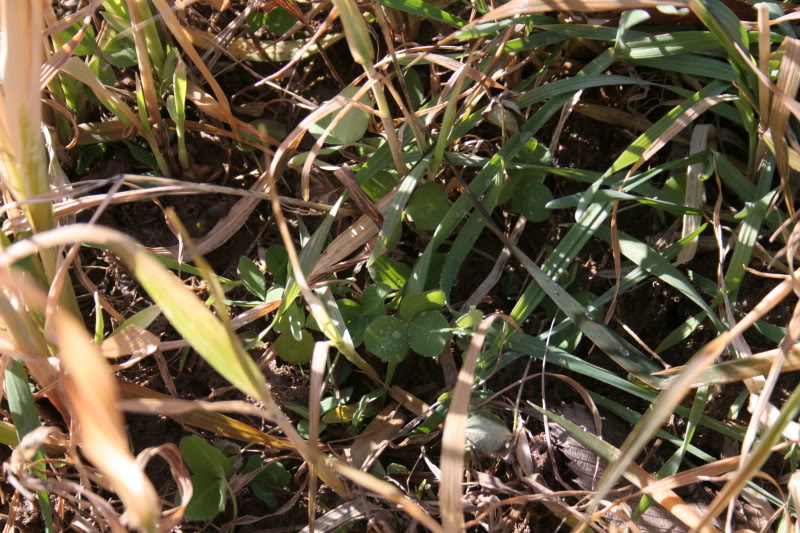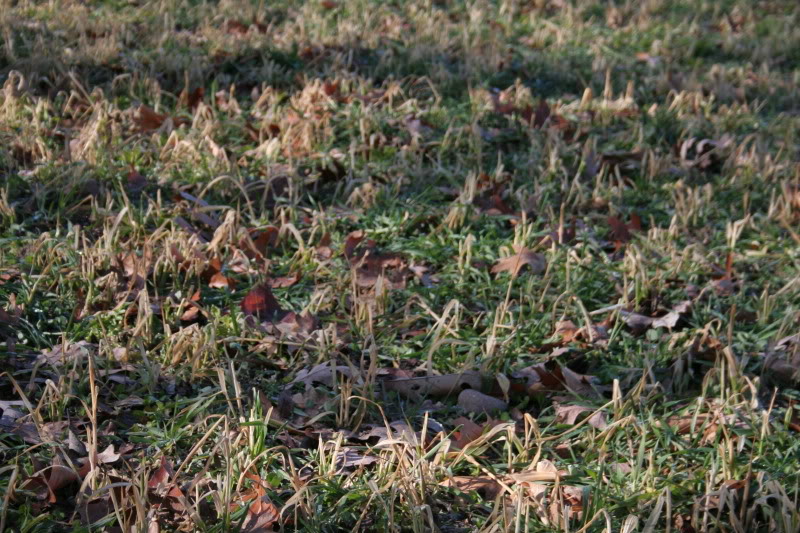dbltree
Super Moderator
December 6th, 2011
The power of a simple easy to grow crop like white clover is amazing yet so many people forget to incorporate it into their single, centralized feeding area (where soils and climate allow) This field is surrounded by cover (perfect!!) on 3 sides and screened with Egyptian Wheat and red cedars on the 4th and is being grazed very hard.

I would prefer to see other crops added to this field so that it will hold and attract deer year around but it is interesting to note that this clover is immediately adjacent to a large alfalfa field, yet they are focusing on the clover.
New feeding areas are sometimes ignored the first year because doe groups are adapted to feeding on ag fields, re-growth in a clear cut or some such but white clover helps adapt them to feeding in your new plot. Lactating does don't travel far so if there is cover (and there should ALWAYS be outstanding cover surrounding your feeding area in the form of thick brushy timber or NWSG) surrounding the feeding area and it contains white clover, they will quickly take advantage of this high quality food source.
it doesn't take much....an 8' strip around the perimeter, odd corners of the field, waterways or simply dividing the field into strips of which 10-20% can be white clover. The rest should be a combination of brassicas, rye mix, soybeans, corn, milo etc. with a goal of year around food sources.
Planting an entire field to white clover is not the answer either because eventually they will scrape the last morsel from the frozen soil and be forced to move elsewhere and that's the LAST thing we want! Having crops like winter rye and big turnip roots to carry them thru will insure they don't become adapted to the...neighbors place.....
The power of a simple easy to grow crop like white clover is amazing yet so many people forget to incorporate it into their single, centralized feeding area (where soils and climate allow) This field is surrounded by cover (perfect!!) on 3 sides and screened with Egyptian Wheat and red cedars on the 4th and is being grazed very hard.

I would prefer to see other crops added to this field so that it will hold and attract deer year around but it is interesting to note that this clover is immediately adjacent to a large alfalfa field, yet they are focusing on the clover.
New feeding areas are sometimes ignored the first year because doe groups are adapted to feeding on ag fields, re-growth in a clear cut or some such but white clover helps adapt them to feeding in your new plot. Lactating does don't travel far so if there is cover (and there should ALWAYS be outstanding cover surrounding your feeding area in the form of thick brushy timber or NWSG) surrounding the feeding area and it contains white clover, they will quickly take advantage of this high quality food source.
it doesn't take much....an 8' strip around the perimeter, odd corners of the field, waterways or simply dividing the field into strips of which 10-20% can be white clover. The rest should be a combination of brassicas, rye mix, soybeans, corn, milo etc. with a goal of year around food sources.
Planting an entire field to white clover is not the answer either because eventually they will scrape the last morsel from the frozen soil and be forced to move elsewhere and that's the LAST thing we want! Having crops like winter rye and big turnip roots to carry them thru will insure they don't become adapted to the...neighbors place.....



